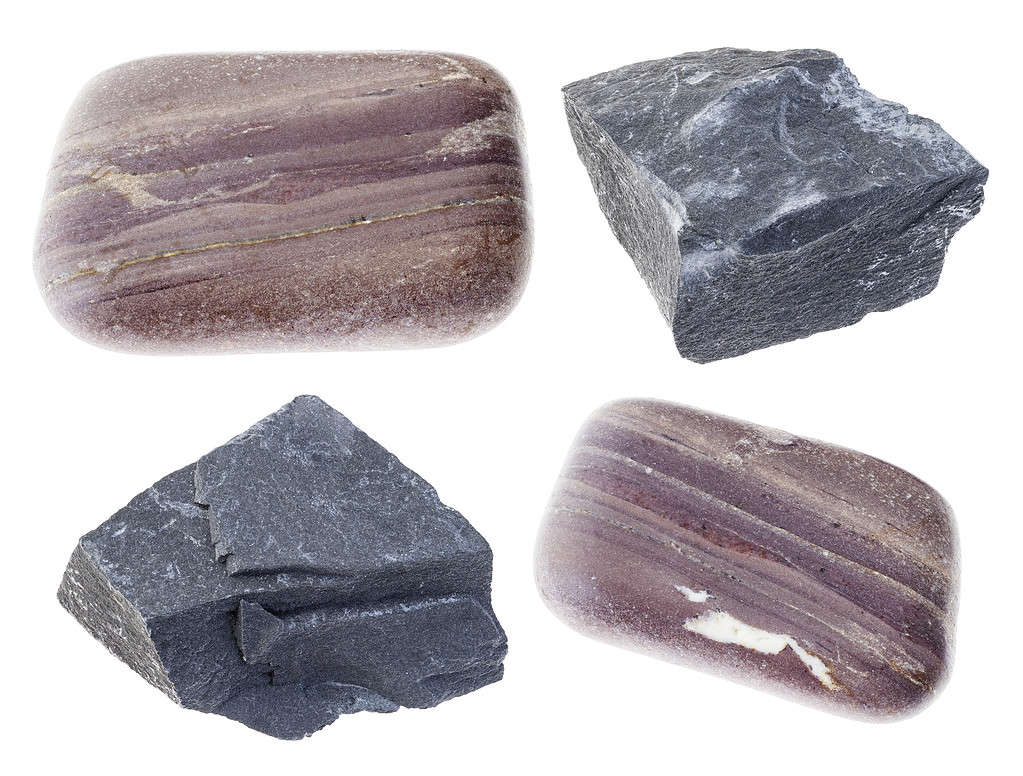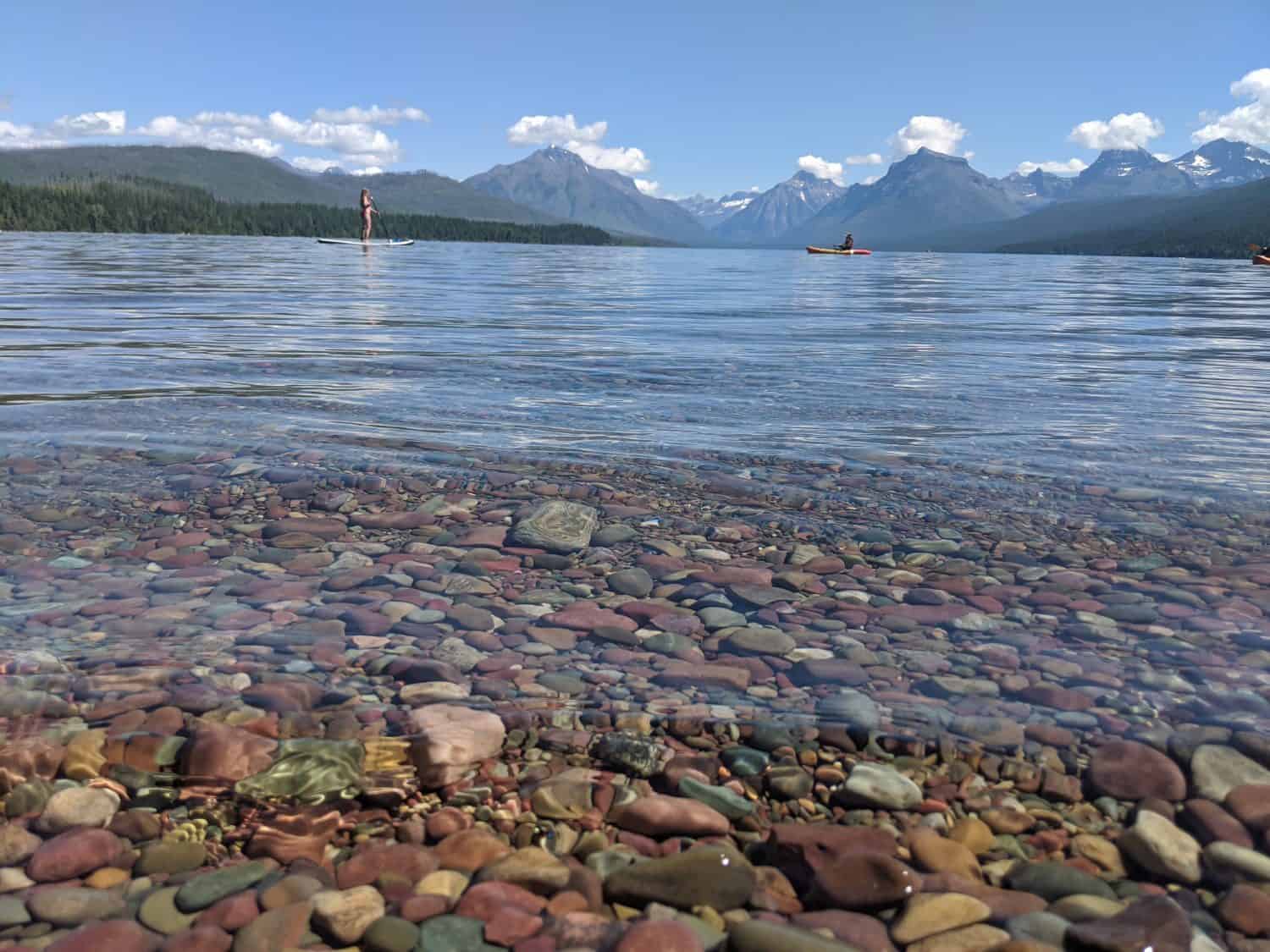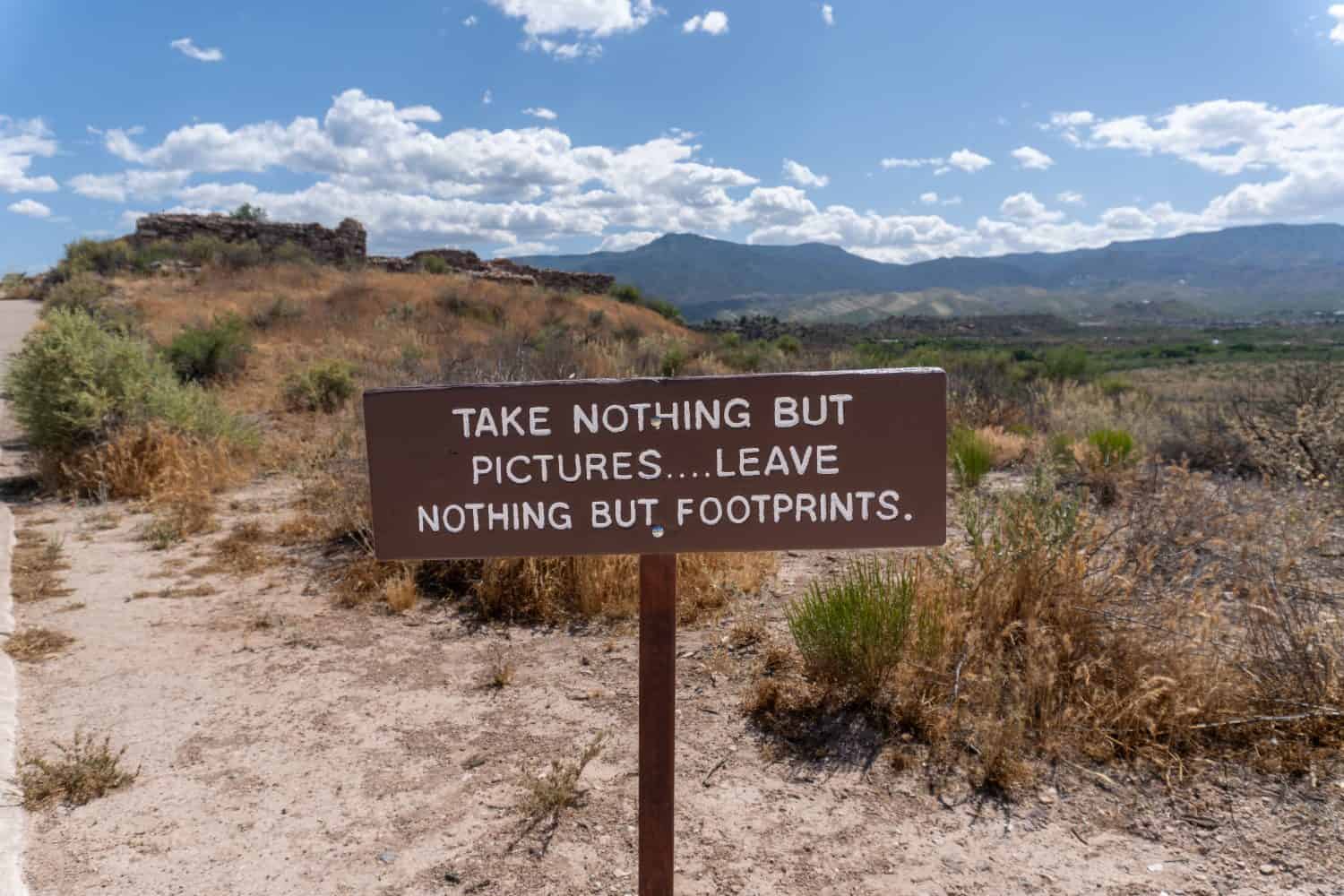Tourists worldwide come to the United States to see the national parks and their natural wonders. Given the idyllic surroundings of Montana’s Lake McDonald and the beauty of Glacier National Park, it’s no surprise that this would be a travel destination. You may find it interesting that one attraction in the national park is a collection of stones found on the lake’s shore. Why do people travel for hours to see Lake McDonald’s colored pebbles? Keep reading for the answer!
How Was Lake McDonald Formed?

Lake McDonald, with its extravagantly colored pebbles, was formed thousands of years ago through glaciation.
©iStock.com/XIN WANG
The formation of Lake McDonald began when the globe underwent a cooling trend about 2 million years ago. During the Pleistocene, ice sheets advanced and retreated numerous times over portions of North America. These glaciers ground over plains and through valleys until they began to recede approximately 10-12,000 years ago. This process scoured the valleys, turning them into deep U-shaped lakes filled with water from glacier runoff. Lake McDonald is one such lake, measuring 10 miles long with depths approaching 500 feet.
What Types of Pebbles Are in Lake McDonald?

Argillite stones, such as these, were rounded in the glaciation process. They achieved their various hues of red or green according to the oxygen level they were exposed to during formation.
©KrimKate/iStock via Getty Images
Most stones in Lake McDonald and around Glacier National Park are argillite. This sedimentary rock formed as sand and iron-rich sediment washed into the sea that covered Montana millions of years ago. This sediment formed a thick layer on the bottom of the sea, which was compressed by its weight and later underwent further transformation from heat and pressure. Later geologic events such as tectonic plate uplift exposed some of the rock where weathering and glaciation occurred. Argillite’s iron content is what contributes to its vibrant coloring.
What Colors Are They?

Sunlight displays the many colors of Lake McDonald’s pebble-strewn shores.
©EB Adventure Photography/Shutterstock.com
The pebbles surrounding Lake McDonald appear to be all of the colors of the rainbow. While primarily red and blue, they may also be green, yellow, purple, turquoise, and black or white. The variety of colors found in these rocks is due to the oxygenation process they undergo during formation. If the stones are exposed to enough oxygen during the formation process, the colors will be varying hues of red. If they are starved of oxygen, as when formed underwater, they will have shades of blue.
What Part of the Lake Is the Best Spot to See the Pebbles?

The eastern shores of Lake McDonald are the best places to see its famous colored stones.
©ameliawluv/Shutterstock.com
For the most part, the eastern shore of Lake McDonald is the best place to find the colored pebbles of the lake. You can find the stones from the shore of Apgar at the lake’s southern end, north of Lake McDonald Lodge. There is also the North Lake McDonald View, a turnout off of Glacier Rte 1. It’s less than a quarter mile north of Sprague Creek Campground (where you can also find the stones.)
When Is the Best Time to Visit Lake McDonald?

Though you can see the pebbles of Lake McDonald in winter, the lake and its shore may be frozen.
©Jim Cumming/Shutterstock.com
Lake McDonald is a fantastic sight in the winter. There is a point where the pebble shore vividly contrasts with its ice-covered waters and the snowclad shore. However, the best time to visit the lake is summer. The clear waters allow for the best view of these magnificent stones from mid-May to early September.
Can You Take the Stones From Lake McDonald?

Visitors are not permitted to take souvenirs from the park.
©EWY Media/Shutterstock.com
As pretty as the stones are, visitors are not permitted to remove them from the lake. While there are stories of people taking rocks or other items from the national parks, causing bad luck, the real reason is more mundane: if everyone took things from the parks, we wouldn’t have things in the parks for people to see. To protect the heritage of our national parks, visitors are encouraged to leave no trace. Take nothing out. Damage nothing. Leave nothing behind.
Where Is Lake McDonald?
Lake McDonald is in Glacier National Park in northwestern Montana. It’s about 31 miles south of the Canadian border, connecting to Canada’s Waterton Lakes National Park. Glacier National Park is nestled between the Blackfeet Indian Reservation to the east and Kootenai National Forest to the west. Visitors can enter the park via Going-to-the-Sun Rd., off Route 2 in West Glacier.
The photo featured at the top of this post is © Jim Cumming/Shutterstock.com
Thank you for reading! Have some feedback for us? Contact the AZ Animals editorial team.






